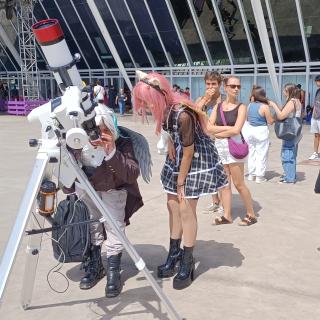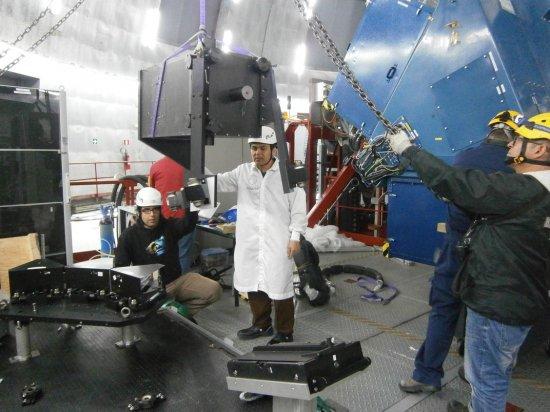It may interest you
-
 An international team of astronomers, including researchers from the Instituto de Astrofísica de Canarias (IAC), the University of Liège and collaborators in UK, Chile, the USA, and Europe, has discovered a transiting giant planet orbiting the smallest known star to host such a companion — a finding that defies current theories of planet formation. The host star, TOI-6894 , is a red dwarf with only 20% the mass of the Sun , typical of the most common stars in our galaxy. Until now, such low-mass stars were not thought capable of forming or retaining giant planets. But as published today inAdvertised on
An international team of astronomers, including researchers from the Instituto de Astrofísica de Canarias (IAC), the University of Liège and collaborators in UK, Chile, the USA, and Europe, has discovered a transiting giant planet orbiting the smallest known star to host such a companion — a finding that defies current theories of planet formation. The host star, TOI-6894 , is a red dwarf with only 20% the mass of the Sun , typical of the most common stars in our galaxy. Until now, such low-mass stars were not thought capable of forming or retaining giant planets. But as published today inAdvertised on -
 El Instituto de Astrofísica de Canarias (IAC) participa en TLP Tenerife 2025 para acercar la ciencia a los jóvenes y fomentar vocacionesAdvertised on
El Instituto de Astrofísica de Canarias (IAC) participa en TLP Tenerife 2025 para acercar la ciencia a los jóvenes y fomentar vocacionesAdvertised on -
 The Instituto de Astrofísica de Canarias (IAC) has again shown its high quality in the field of international research. Two of its Research Professors, Carme Gallart and Enric Pallé, have been selected by the European Research Council (ERC) to receive ERC Advanced Grant s , the most prestigious and competitive grants of the Horizon Europe programme. This call for proposals is aimed at researchers who are leaders in their fields, with consolidated records and highly innovative proposals. Each grant can reach up to 2.5 million euros over five years, with additional funding for specific needsAdvertised on
The Instituto de Astrofísica de Canarias (IAC) has again shown its high quality in the field of international research. Two of its Research Professors, Carme Gallart and Enric Pallé, have been selected by the European Research Council (ERC) to receive ERC Advanced Grant s , the most prestigious and competitive grants of the Horizon Europe programme. This call for proposals is aimed at researchers who are leaders in their fields, with consolidated records and highly innovative proposals. Each grant can reach up to 2.5 million euros over five years, with additional funding for specific needsAdvertised on
